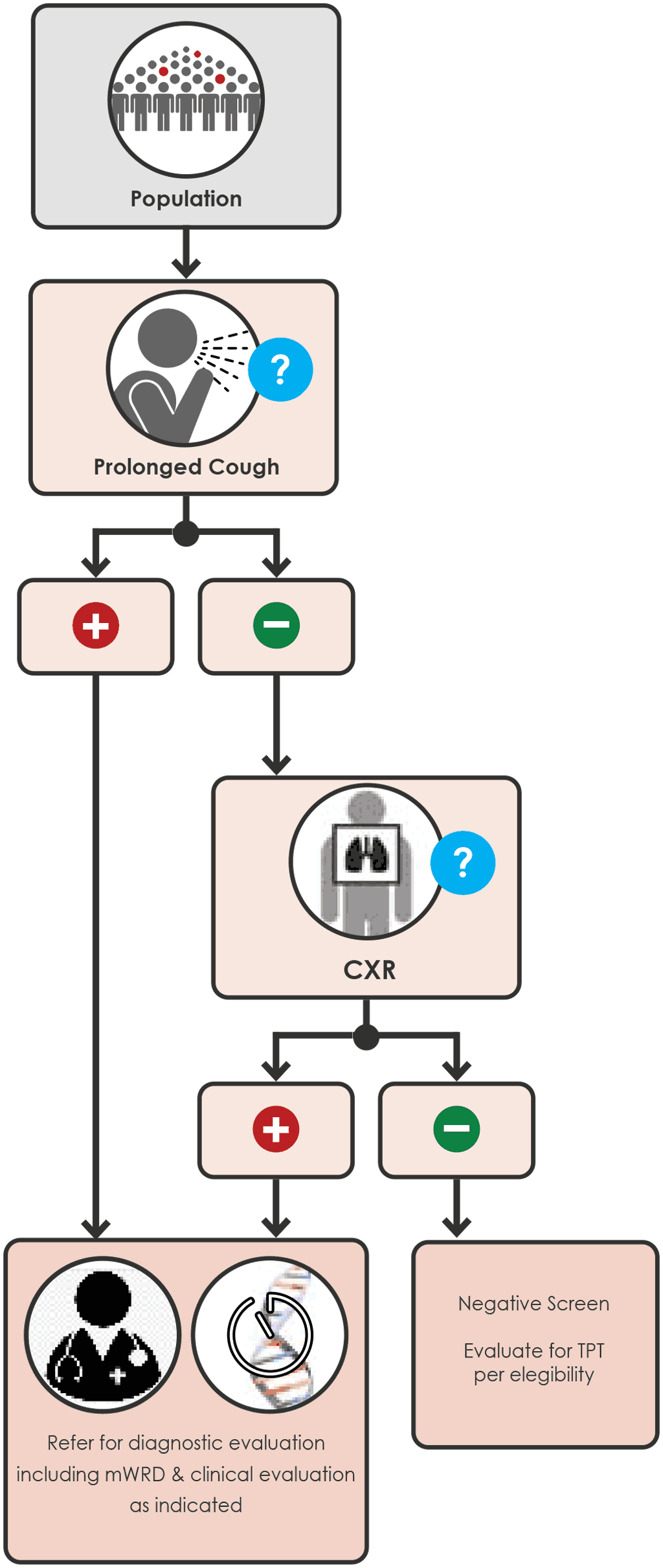2. Recommendations for systematic screening for TB disease in targeted populations
In this guideline, recommendations about systematic screening for TB disease are made for distinct populations for whom it is judged that the benefits and desirable effects of screening outweigh the potential harms.

 Feedback
Feedback
